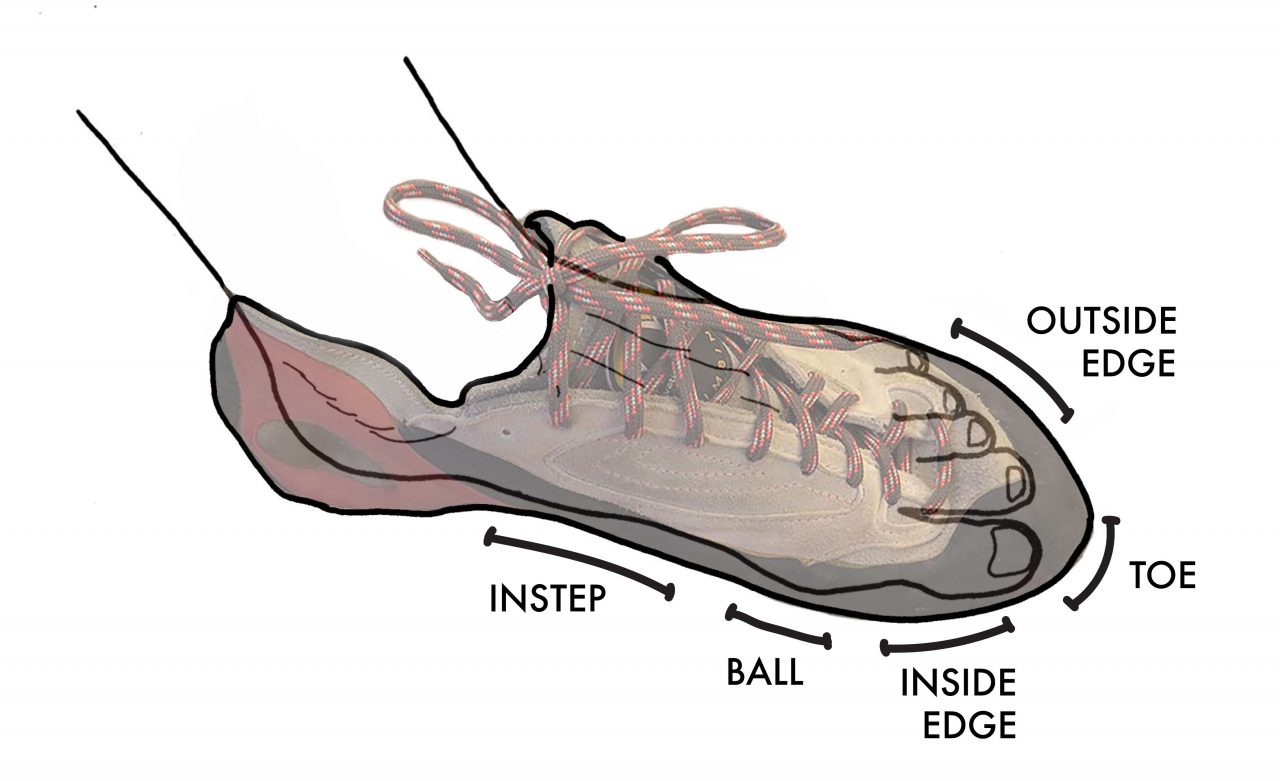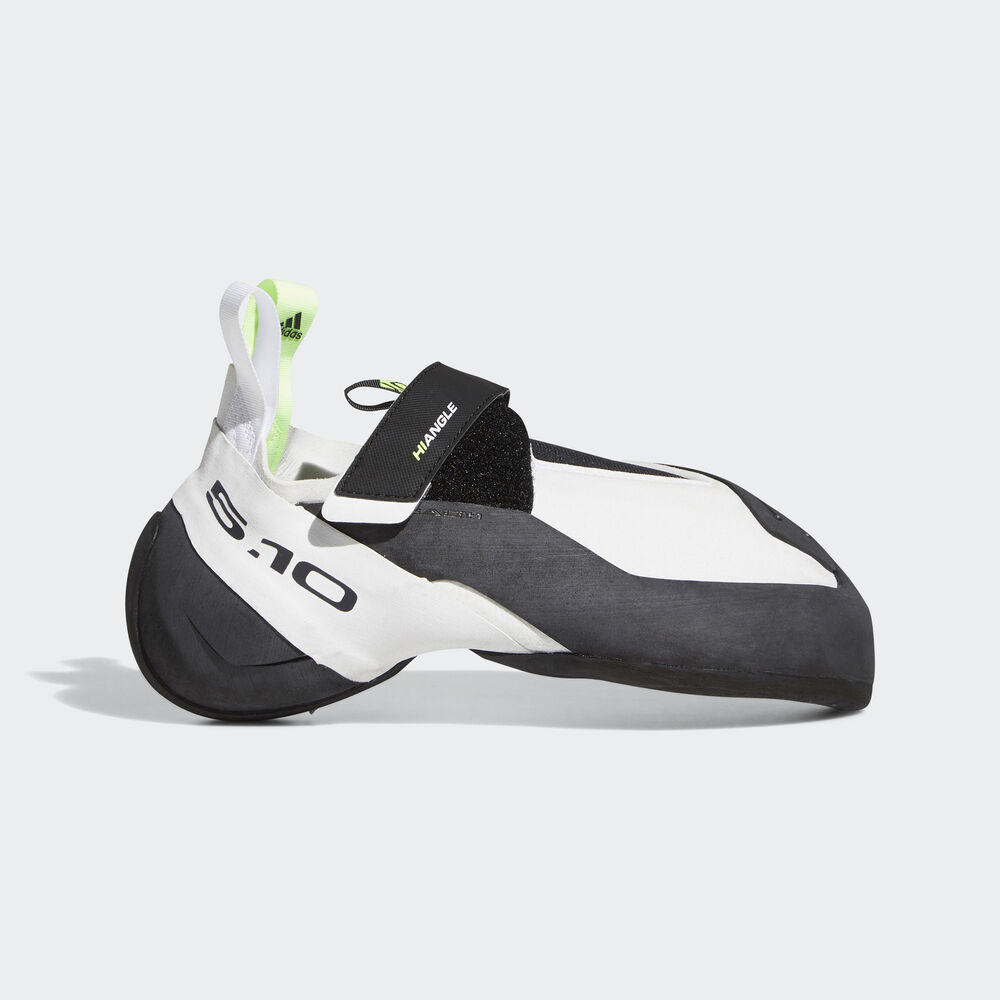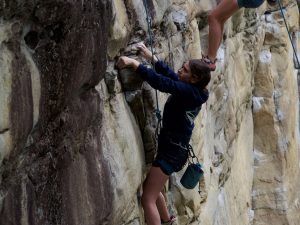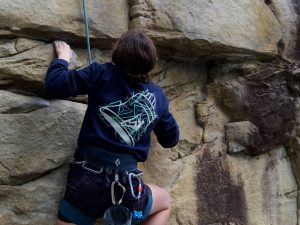Getting Down to the Basics.
If you’ve read our previous articles, “How to Climb Efficiently” and “All About Climbing Walls,” you are now armed with the fundamental principles of good technique and the basic terminology.
Given that our ideal in rock climbing is to carry all of our weight on our feet, we will start at the bottom. This article will focus on basic footwork.
We will begin with what is widely regarded as the single best invention in the history of the sport of rock climbing: the climbing shoe.
Climbing Shoes as 'Sticky'
While it is possible to climb without rock climbing shoes, in modern climbing, this is rare, and not recommended.
Climbing shoes provide two significant advantages that did not exist before their invention. The first, for any climber who has spent even a short time on the wall, is fairly obvious – sticky rubber.
In the “good ol’ days” climbers used a variety of different “normal” footwear. This included everything from hiking boots to sneakers to wrestling shoes to make their ascents.
Then, in the 1970s, the first modern climbing shoes came onto the market. This shepherded a new level of difficulty in the sport. Unlike previous footwear, the new sticky rubber on these shoes allowed climbers to stand on smaller and more slippery footholds than they could ever do before.
Climbing Shoes as Fitted
But, climbing shoes also offer a second advantage. This one is less recognized, but it is equally important – they are fitted to your feet.
Climbing shoes are form-fitted to allow for a better sense of feel, and a greater degree of control over how you stand on any given foothold.
Modern shoes create natural balance points on your foot. They provide the support and precision necessary for standing on footholds of all sizes. This is especially important on those which are small and difficult to use.
Putting It All Together
This combination of sticky rubber and form-fitting is what makes climbing shoes a virtually indispensable piece of equipment in the modern climber’s arsenal.
Because of this, it is important to understand where each of these balance points are and when it is appropriate to use them. On the front of the shoe, where climbers will spend 99% of their time, there are three balance points:
the inside edge,
the outside edge,
and the “toe”.
While the names of these points are deceptively simple, it is not always intuitively obvious to a new climber where they are located.

If you look at the diagram you will see a picture of the front of the climbing shoe with the approximate locations of the three balance points indicated.
Every climbing shoe, and every foot, is slightly different. So, it is important for each climber to develop an intuitive feel for where these balance points are in relation to their own foot, as opposed to a general diagram.
Inside Edge
We will begin the basics of climbing shoes with the inside edge, the most commonly used balance point on a climbing shoe.
While many instructors will refer to this point as “standing on your big toe”, this is slightly misleading. The inside edge is not actually under your big toe, but rather at the base of that toe. It is near the junction where it attaches to the rest of the foot.
Outside Edge
Next, we will look at the outside edge. This balance point is also located near the base of two toes, the two toes which are next to the pinky toe.
The outside edge is used less commonly than the inside edge. It is generally employed for a specialized set of moves called twist-locks.
The Toe
The final concept of understanding your climbing shoes is the balance point “toe” of the shoe. This is the easiest point to identify on a climbing shoe, as it is where your climbing shoe comes to a point.
An interesting aspect of the “toe” of a climbing shoe, is that none of your toes is likely to sit right at this point. In general, the “toe” of your shoe is located between your big toe and your longest toe.
The toe of a climbing shoe is generally used for specialized moves. Most commonly, the toe is for putting the shoe inside smaller pockets, or for certain kinds of smearing.
Understanding Your Climbing Shoes
Climbing shoes are form-fitted to your foot and their natural stickiness help keeps you on the wall. Your main balance points are the inside and outside edge and the toe. Our next article, “Mistakes Newer Climbers Should Avoid,” will focus on how to use your climbing shoes efficiently to get the best out of your climbs.
All material is reprinted with the permission of the author. Copyright 2022 David H. Rowland. All rights reserved.










